Kaldheim Mechanics
Kaldheim brings our continuing adventure to a world named, appropriately enough, Kaldheim. Inspired by Norse mythology, Kaldheim encompasses ten distinct realms, each with its own inhabitants, cultures, and magic waiting to be discovered. Throw in a pantheon that's a little more hands-on than most and a giant World Tree, and we have ourselves a party. Let's take a look at the major mechanics that await you.
Foretell
With all the major events going on around Kaldheim—war, conquest, entire realms crashing into one another—you just know someone saw some of it coming. Perhaps predictably, a mechanic based on seeing the events of the future appears here: foretell. And just because you see what's going to happen, it doesn't mean your opponents will.
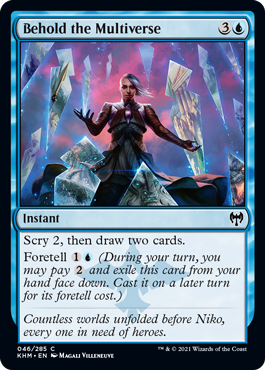
Any time during your turn, you can pay {2} and exile a card with foretell face down. Then, on a future turn, you can cast that card from exile by paying the foretell cost (the mana cost listed as part of the foretell keyword) rather than paying its mana cost. Pretty simple—set up the future, then watch it come to pass.
There are some important things to remember about casting the spell from exile. First, you can't cast it on the same turn you exile it. However, foretelling is optional, so you can always just cast the spell as normal if you're looking for a more immediate impact. Second, casting the spell from exile uses all the same timing rules the spell normally has. If you foretell an instant like Behold the Multiverse, you can cast it as soon as the next turn. If you foretell a creature like Augury Raven, you'll usually have to wait until your next turn to cast it.
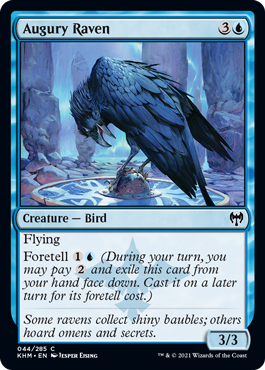
Foretelling a card has several benefits, the most obvious being that you get to spread out the overall cost over a couple turns. The foretell cost is usually cheaper than the mana cost. Some cards have additional benefits if the spell was foretold before being cast. Plus, it can really keep your opponent off-guard.
If you've played with morph and face-down permanents, you'll be familiar with these additional rules that apply to foretell. In exile, you must keep your foretold cards clear. Your opponents won't know what the cards are, but they'll know which card you foretold first, second, and so forth. At the end of the game, if you still have any foretold cards in exile, reveal them to all players so they know the future you foretold was an honest one.
Boast
Great, heroic deeds are one thing, but getting to brag to your friends, enemies, worshippers, and what have you? That's where it's at. Introducing boast abilities. A boast ability is an activated ability that can be activated once a turn, but only if the creature that has the ability has attacked that turn. This is no time for defense!
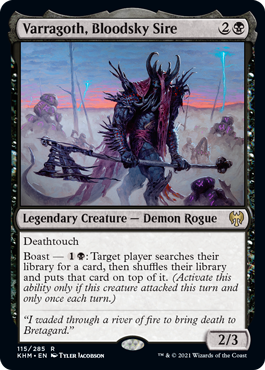
Boast abilities can be activated during combat or even after combat—any time in the turn after the creature was declared as an attacker. Unfortunately, this means a creature entering the battlefield attacking won't allow it to boast . . . but if it is worthy enough, it will survive to attack in a future combat, and then you can sing of its deeds!
Modal Double-Faced Cards
Modal double-faced cards were introduced in Zendikar Rising, and they're back for another go. They're a no-longer-actually-new-but-still-kinda-new twist on double-faced cards—rather than transform, these cards let you play either of their two faces.
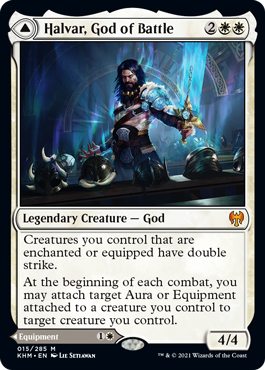
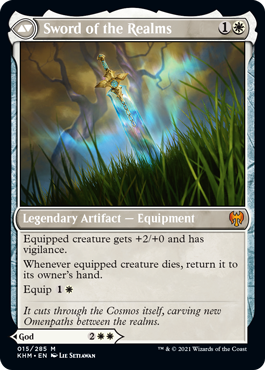
The gods of Kaldheim and their chosen weapons (or other gear) give you great versatility. Halvar stands ready to lead your forces into battle, but sometimes the situation calls for a giant sword. This is especially true if Halvar is already on the battlefield!
The rules for modal double-faced cards haven't changed. If you're casting one, you choose which face you're casting. The same is true for playing a land face of a modal double-faced card. If you're putting one onto the battlefield without playing or casting it, you get the front face. Speaking of land faces, Kaldheim completes the popular "dual land" cycle started in Zendikar Rising.
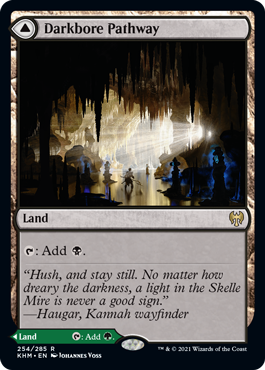
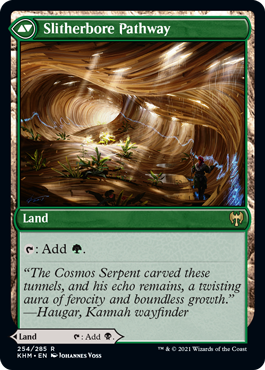
You can find out about more complex modal double-faced card interactions in the Kaldheim Release Notes, coming soon, but you can also check out the Zendikar Rising Release Notes for an overview.
Other Returning Mechanics
Kaldheim has ten distinct realms, so there's plenty of room for a lot of awesome stuff to come back. Let's take a brief tour! With exclamation points!
Snow!
At least one or two of those realms are winter wonderlands. Snow is a returning supertype that's found on all sorts of cards. Snow doesn't really do anything by itself, but it can be referred to by other cards in various ways.
{S} is the snow mana symbol. A cost of {S} can be paid by any one mana from a snow source. Some of the most popular snow sources are the returning "Snow-Covered" basic lands.
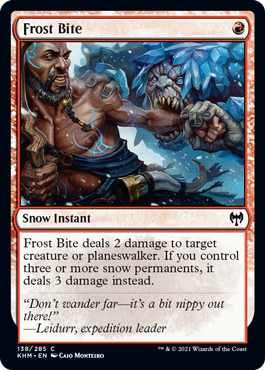
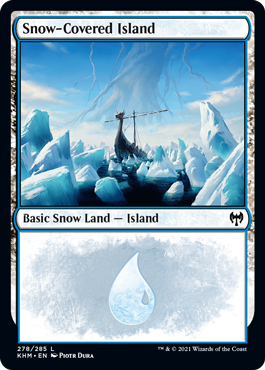
Sagas!
There are some epic, epic things going on, so, naturally, the cards we designed to tell epic stories make their return.
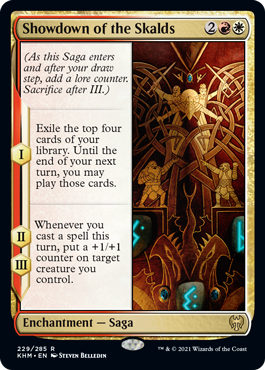
Sagas are enchantments that have multiple chapters, telling you how the story is going to play out. They enter the battlefield with a lore counter, which causes the first chapter's ability to trigger. At the beginning of your first main phase, add a lore counter and trigger the next chapter. After the story is complete (meaning the last ability resolves or otherwise leaves the stack), sacrifice the Saga.
Changeling!
Kaldheim is home to Elves and Dwarves, Humans and Giants, and more than a few beings who are all the above. Changeling is a returning keyword ability that gives a creature or creature card all creature types, no matter where it is.
Glory Awaits
And those, my friends, are the mechanics of Kaldheim. But there's so much more to this set! New planeswalkers, legends galore, fantastic locations, innovative spells, and more are waiting for you. I hope you have an amazing Prerelease, wherever you are. Stay safe and enjoy Kaldheim!

